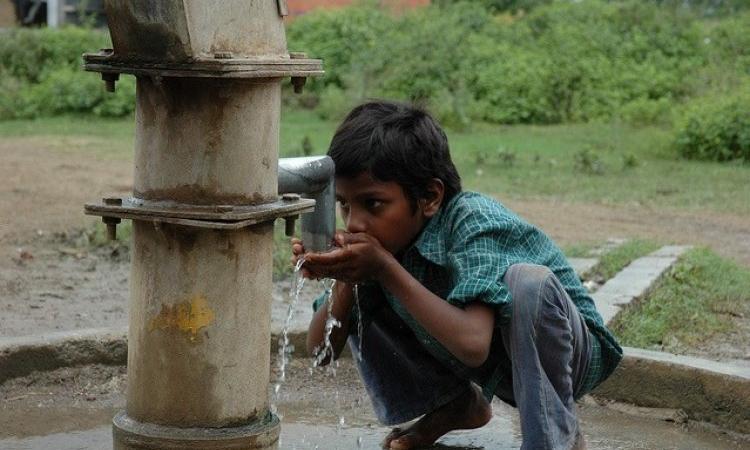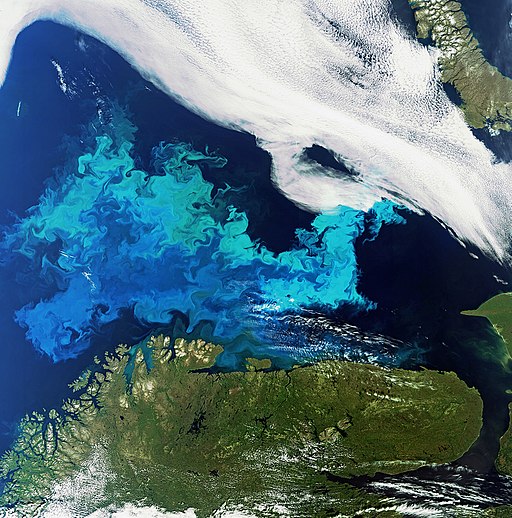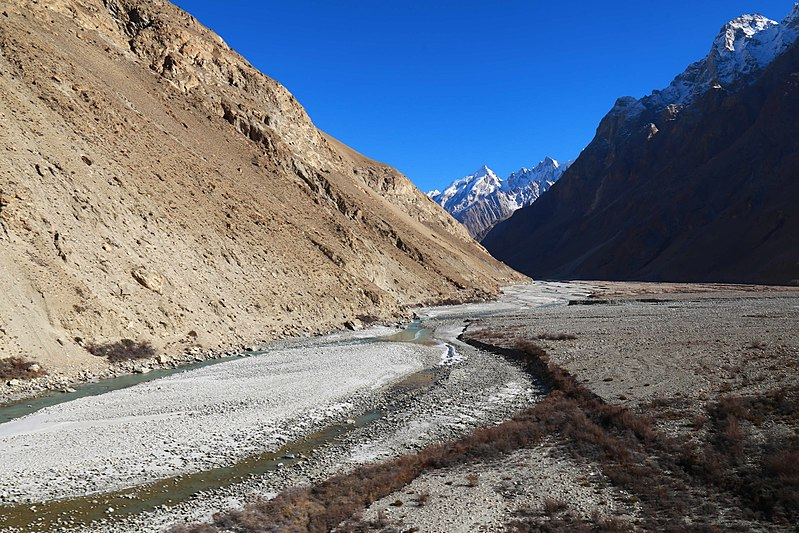
Climate change triggered heat waves threaten water availability
Ninjallama rues as she remembers, " It was a terrible summer. The heat wave was killing. Three people died in my village. People with skeletal fluorosis suffered .. "
Heat waves in summer are becoming commonplace in India for the past five years. Record high temperature of 48 degree celsius was recorded in Telangana in 2019. More than 100 deaths were reported from the heatwave last year in Telengana alone. This adds to the pressure of water and there becomes no option but to drink contaminated water in such situations.
Globally safe and fresh water has already been threatened by pollution with economic growth expected to be halved by water contamination alone, according to a recent World Bank report. Climate change just adds to the problem.
 And as if this is not enough, new research from the Department of Oceanography and Coastal Sciences at the Louisiana State University shows that water pollution is worsening climate change in more ways than we can imagine. For example, phytoplankton in the deep sea greatly helps in regulating the carbon cycle by absorbing carbon dioxide and controlling temperature rise. However, water pollution due to oil spills and ocean acidification are selectively destroying new blooms of this vital algae, thus destroying nature’s natural mechanisms to reduce heat waves and control climate change by regulating the carbon cycle.
And as if this is not enough, new research from the Department of Oceanography and Coastal Sciences at the Louisiana State University shows that water pollution is worsening climate change in more ways than we can imagine. For example, phytoplankton in the deep sea greatly helps in regulating the carbon cycle by absorbing carbon dioxide and controlling temperature rise. However, water pollution due to oil spills and ocean acidification are selectively destroying new blooms of this vital algae, thus destroying nature’s natural mechanisms to reduce heat waves and control climate change by regulating the carbon cycle.
And dissolved organic carbon (DOC) is making freshwater more scarce. A study by Australia based Connected Water Initiative Resource Centre says that DOC increase upto 54 percent is happening because of increased temperatures. This makes water less potable and harmful for human beings.
High temperatures and unsafe water increase health risks
Some 90 years back, a British surgeon general Dr Robert McCarrison started out with some work which is still relevant. He mapped out the tough terrain of South Asia and made a first kidney stone map of the region. His findings still hold true. A kidney belt stretches from Western India to Pakistan, clearly marking out a stone belt. Globally, similar trends remain of high temperature and kidney stone correlation.
Studies indicate that temperature increase affects chances of kidney stone worsening. Further, poor water availability, contamination and poor water hydration of the kidneys causes worsening of the kidney stone problem. This is just one dimension linking climate change, human health and water contamination.
Cholera is making a comeback, as model studies indicate. A recent study by the University of Maryland forty year projection of Africa shows that temperature increase will spread cholera to around 70 percent of the continent. This already hits out at further scarce water supplies and creates a continental footprint of infections such as cholera.  And pathogen risks are not limited to problems such as cholera. Permafrost melting is expected to release germs such as that of small pox which were in hibernation for decades. As we feel confident of having conquered some earlier problems, they might re-emerge again, along with some viruses and pathogens which we never knew of. A recent example is that of an anthrax outbreak in Siberia caused because of permafrost melt and age-old anthrax release. A similar possibility is being expected for smallpox and other pathogens long thought to have been eliminated.
And pathogen risks are not limited to problems such as cholera. Permafrost melting is expected to release germs such as that of small pox which were in hibernation for decades. As we feel confident of having conquered some earlier problems, they might re-emerge again, along with some viruses and pathogens which we never knew of. A recent example is that of an anthrax outbreak in Siberia caused because of permafrost melt and age-old anthrax release. A similar possibility is being expected for smallpox and other pathogens long thought to have been eliminated.
Sea level changes are already hitting the coasts badly. But if we take coastal freshwater hit by salinity intrusion, such changes are going to hit them harder with every few inches of rise in sea level. Add to this periods of aridity which increase such salinity in coastal groundwater further. Fertile land gets saline getting more areas under salinity with such sea water intrusion, causing more freshwater to get spoilt.
Phytoplanktons, pathogens, kidney disease are some of the connections that we are aware of. Some of the really unknown and myriad connectivities emerge every year. Some 18,000 birds died this year in India's Sambhar Lake due to a fascinating interplay between an early monsoon, saline waters diluting, and ripe conditions for Avian Botulism. By the time we knew of what was happening, there was a heavy loss of precious bird lives.
The aquifers beneath us are already rich with high fluoride, arsenic and other contaminants. With every spell of dry and hot conditions, such contamination in water will only concentrate and worsen conditions of fresh drinking water. These and other interplays between climate and water contamination are now making water management an even more tricky affair.
As climate change handshakes water contamination, we pass by very much uncertain times. Back in Telangana, India, the problem of heat waves and water contamination is looming with the summer onset. For Ninjallama, preparation is her best bet. The rest will be upto resilience of the systems that we build now.
About the author: Dr Sunderrajan Krishnan is the Executive Director of INREM Foundation, a research organisation that works on public health, water and environmental issues.
Disclaimer: The views and opinions expressed in this article are those of the author and do not necessarily reflect the policy or position of India Water Portal.